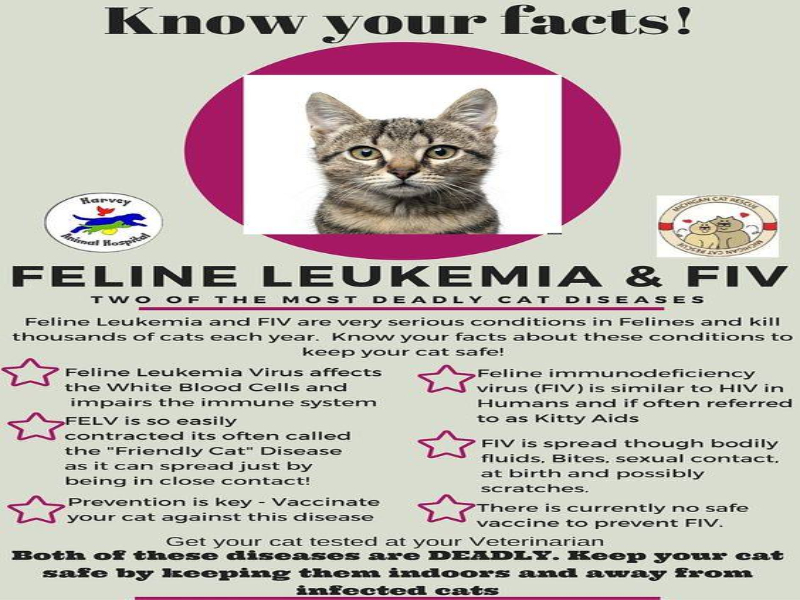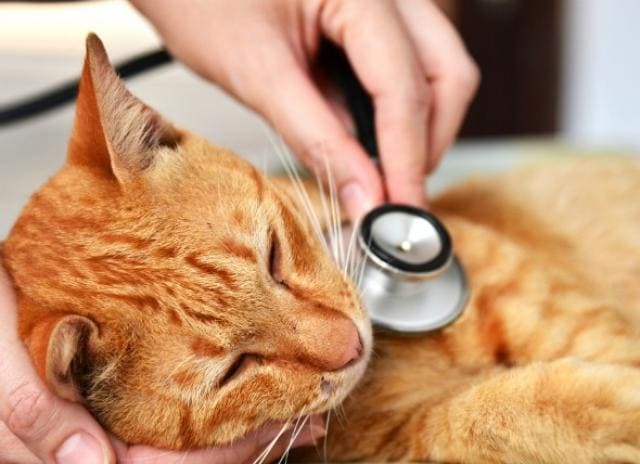Table Of Content

The leukemia virus attacks the cat’s blood cells by invading tissue that makes up the blood cells, including bone marrow and lymph tissue. Blood cells (red blood cells, white blood cells, and platelets) play an important role in keeping the body supplied with oxygen and nutrients. White blood cells are especially important in helping the immune system, and special types of white blood cells are called to action when a cat is fighting an illness. There is no definitive cure for FeLV; however, with the right care, cats with the disease can live relatively long periods without feeling ill. Twice yearly vet examinations are recommended, which may include annual or biannual blood or urine tests. Many diseases can cause hair loss and common ones are allergies, fleas and mites, fungal infection (Ringworm), pain, and stress or anxiety.
What to expect when you're expecting a fur baby
They commonly do this because they’re itchy due to allergies, fleas or mites, fungal infection (Ringworm), because they’re painful, or because they’re stressed or anxious. Although vaccination is very helpful in preventing infection with FeLV and therefore controlling FeLV-related disease, no vaccine is 100% protective. When possible, do not allow your cat, particularly as a kitten, to come into close contact with known FeLV-infected cats or cats without a known history of proper vaccinations. In general, around 1-2% of the cat population is persistently infected with this virus, and many more are exposed. The number of cats infected differs according to the geographical location, environment, and the lifestyle of the cat. Infection is more common in colonies of cats where there is close contact between individuals.
Hair Loss Related To Cancer Questions and Advice from Veterinary Professionals
If your cat is allowed outdoors, supervise them, or consider building a catio so your cat can enjoy being outside without risk of them wandering or encountering other cats. The virus is typically transmitted through fighting, mutual grooming, playing, and rarely through shared litterboxes or bowls. Easily compare quotes from the most trusted pet insurance companies in the United States. Tcrascolorado.com a site about all things about pets like dogs, cats, birds and so on. Feline friends that are licking themselves a lot should visit the vet’s office, too, and they might benefit from an e-collar during this time. Based on the combined result of these tests, your vet will be able to make the most accurate recommendation regarding what to do next.
Persistent Infections
Diagnosis of disease due to FeLV is more difficult because of the variety of signs and symptoms. It is common to have a complicated situation in which other diseases or conditions occur alongside the FeLV infection. These cats are generally considered presumptively infected and potential sources of infection until further clarification is possible. Testing is recommended annually if the cat lives in a household with FeLV-positive cats or cats of unknown status, before blood donation (ELISA and PCR assay), and if the cat has outdoor access. After oronasal inoculation, FeLV first replicates in oropharyngeal lymphoid tissue. From there, virus is carried via monocytes and lymphocytes to peripheral tissue including spleen, lymph nodes, epithelial cells of the intestine and bladder, salivary glands, and bone marrow.
How to Care for Cat Incontinence and Make Your Kitty Feel Better - Daily Paws
How to Care for Cat Incontinence and Make Your Kitty Feel Better.
Posted: Thu, 31 Dec 2020 08:00:00 GMT [source]
In the article below, you’ll find out more information about the signs of feline leukemia. You can use this information to figure out when it might be time to speak to your vet for more information and a full diagnosis. I'm a practicing holistic veterinarian offering house call veterinary care in Seattle, Washington.
Understanding the complexities of feline leukemia and its impact on a cat’s coat can help pet owners provide the best possible care for their furry companions. When a cat is infected with feline leukemia virus, its white blood cells have been compromised and are no longer able to help fight off infections. Various skin, respiratory, and urinary infections can develop without a healthy immune system in place.
But the virus is also shed in blood, urine, feces, nasal secretions, and milk. Sharing food and water dishes, using the same litterbox, mutual grooming, and bite wounds are all possible methods of transmission. Infected queens can infect neonates when the babies drink the infected milk. Transmission can also happen via blood transfusions or contaminated needles/instruments. A cat at any age can be infected with feline leukemia virus through exposure. Allowing an unvaccinated cat to be unsupervised while outdoors may expose it to infected cats.
Bringing a new cat into the home that has not tested negative for the feline leukemia virus may also spread the disease. In a US study, FeLV infection was diagnosed in 9% of cats undergoing treatment for bite wounds, approximately 3 times the rate for cats in general. Vertical and horizontal transmission from infected queens to their kittens may occur in utero or via nursing, respectively. Because FeLV is a fragile, enveloped virus, horizontal transmission between adults usually requires prolonged, intimate contact.

Feline Leukemia Virus Brochure
Mange mites burrow under the skin and can cause extreme itching, even though they can't be seen. Treatment usually involves medicated dips or application of a topical flea and tick medication under veterinary supervision. Flea allergy dermatitis, an allergy to a flea's saliva when they bite a pet, can lead to hair loss. After sustaining flea bites, a cat's focus becomes scratching to relieve the intense itching. The animal will go to any lengths to reach the agitated skin, including biting off hair in the bothersome areas.
Most veterinarians counsel against introducing a new cat into a household with a FeLV-positive cat, because they may be at risk for contracting the infection – even with vaccination. In addition, the stress of a newcomer may adversely affect the FeLV-positive cat. Your veterinarian may order laboratory tests in order to diagnose the cause of hair loss. These often include smears, and culture of the skin to check for bacterial, fungal, or yeast infections. Flea combing and skin scrapes may also be performed to look for parasites.
Because detection of infection has such a notable impact on long-term patient care, any questionable results should be reevaluated with repeated or additional testing. Immediate retesting options after a questionable or positive POC test include referral laboratory testing using a microplate ELISA for FeLV p27 antigen or PCR assay for FeLV provirus. Tumors such as lymphoma and lymphoid leukemia develop in as many as 30% of cats with progressive FeLV infections. Clinical signs of illness in FeLV infected cats may be due to unrelated illness, secondary to FeLV-related immunosupression, or directly related to FeLV infection.
Their use is highly recommended for any adult cat that goes outside at any time and therefore could have contact with FeLV-infected cats. Vaccination is also recommended for all kittens, regardless of lifestyle, because kittens are highly susceptible to infection. As with other vaccines, an initial course of two injections is required, and regular boosters are necessary to maintain immunity. Your veterinarian will discuss the most appropriate vaccination options for your cat with you. Second only to trauma, feline leukemia virus (FeLV) is a leading cause of death in cats worldwide. In 2010, statistics suggested that it affected 2–3% of cats1, making it a crucial disease to consider for the health and well-being of the cat population.
While any skin area may be affected, the most common locations to find cutaneous lymphoma lesions include the junction between mucus membranes and the skin. Examples include the lip margins, eyelids, around the nose, anus/rectum, vulva, and the prepuce of the penis. In the vast majority of cases of cats that exhibit paraneoplastic alopecia, the condition is caused by, or at least linked to, cancer of the pancreas (other cancers are possible as well).
FeLV is one of the leading causes of death among cats in the U.S., says Fetch by WebMD, outpaced only by trauma-related deaths. Fortunately, the incidence of FeLV has decreased significantly thanks to early detection, broader awareness of the signs and an effective vaccine. Age does appear to be a factor, as the majority of cases seen are between nine and sixteen years of age, with an average age of 12.5 years. You can help your cat by feeding them wet food some or all of the time. You may also choose to add a little water or plain, unseasoned chicken broth to their dry food to “sneak” some more fluids into their diet. Stress can be treated with environmental modifications to help reduce potential sources of stress, as well as supplements, pheromones, and anxiety medication.

No comments:
Post a Comment